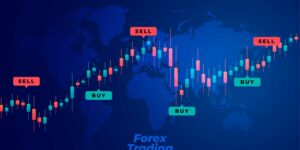Exchange-Traded Funds (ETFs) have become an essential part of investment portfolios for both individual and institutional investors. Offering diversification, lower costs, and accessibility, ETFs have surged in popularity. A critical part of this growth revolves around the implementation of effective ETF trading strategies by using a trusted IB program. According to data from ETF Trends, assets managed in ETFs globally reached $9 trillion in 2022, demonstrating a remarkable 20% increase over the previous year.

Diversification and Tactical Allocation: Crafting a Balanced Portfolio
Diversification is often hailed as a key advantage of ETF trading. Through investing in various ETFs that track different sectors, asset classes, or regions, investors can spread risk and enhance potential returns. Research from the Investment Company Institute (ICI) shows that 65% of financial advisors prefer using ETFs for tactical asset allocation. This approach helps in responding to market fluctuations, aligning short-term investment decisions with long-term financial goals.
Leveraging Trends: Momentum and Sector Rotation Strategies
Momentum trading is a common strategy in the ETF realm. Investors seek to capitalise on existing market trends by buying assets that have been performing well and selling those showing signs of decline. Similarly, sector rotation strategies involve shifting investments between sectors based on economic and market cycles. A 2021 study by the Financial Analysts Journal found that momentum-based ETF strategies outperformed the market by 3% on average during the past decade, highlighting the potential success of these trend-following approaches.
Cost Efficiency: The Passive and Active Debate
ETFs have attracted attention for their cost-effective nature, particularly in comparison to mutual funds. Passive ETFs, which simply track a benchmark index, have been especially popular for their low fees. However, active ETFs, managed by professionals who attempt to outperform the market, are gaining traction. Statistics from ETFGI reveal that active ETFs saw inflows of $98 billion in 2022, representing a growth of 40% compared to the previous year. This indicates a growing interest in actively managed strategies that seek to add value beyond merely replicating an index.
Risk Management: Hedging Strategies with ETFs
Risk management is integral to successful ETF trading, and hedging strategies can be particularly effective in mitigating potential losses. Investors often use inverse or leveraged ETFs to offset risks in their portfolio. According to a report by Risk Management Solutions, 25% of institutional investors utilised hedging strategies with ETFs in 2021, reflecting a conscious effort to navigate market volatility.
Conclusion: The Evolving Landscape of ETF Trading Strategies
ETF trading strategies offer a rich and multifaceted field for investors seeking to build and manage diversified portfolios. From leveraging market trends to implementing cost-efficient approaches, and from navigating risks to embracing technological advancements and sustainability, the world of ETF trading is both dynamic and rewarding. As markets continue to evolve, staying abreast of trends, understanding various strategies, and adapting to emerging opportunities will remain essential for success in ETF trading. The growing resources and tools available provide investors with the means to craft personalised strategies that align with their unique financial objectives and values.





